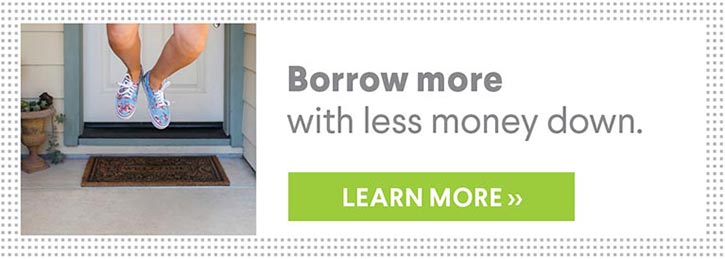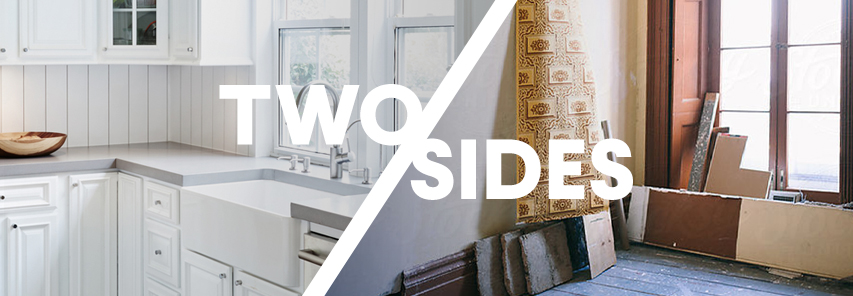SoFi Two Sides: New Home or Fixer Upper?
Two Sides is a new series of articles in which we ask SoFi members and employees to weigh in with their experiences, perspectives, and insights on topics important to our diverse community.
When house hunting, you might have trouble deciding whether you want to buy new home or invest in a fixer-upper. While a new or newer home typically requires little or no work, you’ll likely pay market price, which means ponying up more dough up front. With a fixer-upper, there’s a good chance you’ll get a deal that allows you to put less money down, but you’ll need funds on hand for immediate renovations. You’ll also need to plan ahead financially for any fixes you want to make at a gradual pace.
So between the two options, how do you decide what’s ultimately best for you? Let us help.
In this, the first installment of our Two Sides series, two of our members, who are also homeowners, weigh in on this topic. Representing the “New Home” side is Nora Chang, a SoFi member and Sales Director from Texas, who refinanced her Parent PLUS student loans and saved over $8,000. Taking the “Fixer Upper” side of the debate is Leanna Kemp Kristoff, also a SoFi member and architectural designer from Minneapolis, who refinanced her student loans and saved over $4,000. Here are their insights:
Team Fixer Upper: Leanna Kemp Kristoff, Architectural Designer from Minneapolis, Minnesota
Affordability and character
While it’s definitely an investment of your time and energy, renovating an older home is a lot more rewarding than new construction. When my husband and I bought our nearly 100-year-old house two years ago, it was the only affordable, realistic option for us.
The home was half the price of new construction in the area, but we had to put about $10,000 into it before moving in. We refinished the original hardwood floors and repaired baseboards, added a weather wrap and re-glazed the windows, updated the plumbing, and stabilized the roof.
Related: Find out the cost of your next home renovation project with SoFi’s Home Improvement Cost Calculator.
The history and character of an old home, along with the high-quality original materials and level of craftsmanship that likely went into building it, is really special. You also get a lot for your money in terms of design and layout. Also, a fixer-upper provides a great opportunity to do some projects on your own, or to work with an architect or designer. Sure, it’s more work, but you definitely get what you put in.
City richness and convenience
A huge factor in buying an old home is that in many cities, including Minneapolis, older homes are closer to the city center, in dense and diverse urban areas. You get to live in more developed, tree-lined neighborhoods close to established businesses, great restaurants, and little bookstores. The suburbs can lack the richness of the city. Plus, living close to the city means not dealing with an hour-long commute to work.
Team New Home: Nora Chang, Sales Director from Colleyville, Texas
More quality time with family
It was more my husband’s decision to buy our ready-to-move-in home this past spring. He wanted to spend more time with our sons. So when we asked ourselves if we’d rather spend months banging on two-by-fours or hanging out with the boys, the answer was simple. Major renovations would have disrupted our family life—we were sure of it. When we bought a house in Seattle back in 2006, we renovated the kitchen and two bathrooms. We spent over $100,000, and it took about two years to remodel in stages. We didn’t have children then, so we had the time and energy for renovations. If we did that now, we’d lose time with the kids and be forced to eat most of our meals out, which would get expensive fast!
Recommended: Use SoFi’s Home Project Value Estimator tool to understand what return you may get on your next home improvement project.
Buying with the future in mind
When we bought our first home in Colleyville in 2013, we actually thought about renovating again, but soon decided to save up for a newer home instead. We bought the home we live in now last spring. It took us three years to save for a down payment of just over 10%, and it cost $300,000 more than our last home, but it’s 2,000 square feet larger. For us, having that extra space and not having to deal with contractors and messy renovations has made the financial struggle worth it.
If you’re actively searching for a home or planning to renovate your current home in the near future, let us help. SoFi’s offers mortgage loans up to $3 million dollars with just 10% down, and personal loan options so you can invest in home improvements.





